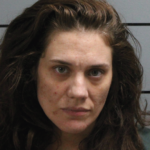06/15/10
Summer is upon us, and throughout these potentially hot months, Hoosiers will be enjoying the outdoors more with family and friends. State health officials encourage people to get out and be active, but also offer sun safety tips to keep them safe.
Skin cancer is the most common form of cancer in the United States. The two most common types of skin cancer—basal cell and squamous cell carcinomas—are highly curable. However, melanoma, the third most common skin cancer, is more dangerous, especially among young people. Melanomas are caused by exposure to ultraviolet (UV) light from the sun or tanning beds.
“Melanoma is a serious type of skin cancer. More than 75% of all skin cancer deaths are due to melanoma. In 2007, 191 Hoosiers died from melanoma,” said Joan Duwve, M.D., medical director for Injury Prevention at the Indiana State Department of Health. “The damage to skin caused by sunburns during childhood may lead to skin cancers, including melanoma, in older teens and adults. Make sure you protect yourselves and your children while you are out in the sun.”
Dr. Duwve recommends people:
- Use water-resistant sunscreen or sun block that has a sun protection factor (SPF) of 30 or higher and provides broad-spectrum coverage against both UVA and UVB light and reapply as directed;
- Wear a hat;
- Wear sunglasses with UVA and UVB protection; and
- Put on a shirt, especially they will have prolonged exposure to the sun.
When temperatures reach 90 degrees (Fahrenheit) or greater, health officials caution that overexposure to the heat can be a concern. Young children and the elderly are at increased risk for such heat-related illnesses as heat stroke or heat exhaustion. Children should never be left in parked cars, even with the windows cracked open, because of the risk of heat stroke and possibly death.
Heat cramps are muscular pains in the abdomen, legs, and arms that occur from strenuous activity and increased sweating. Heat exhaustion can develop after several days of high temperatures and low fluid intake. Heat stroke, also known as sunstroke or hyperthermia, is a life-threatening situation in which the body is unable to regulate its temperature and cannot cool itself down.
“When temperatures and the humidity are high, make sure you drink plenty of water even if you don’t feel thirsty. Participating in strenuous outdoor activity should be done in the early part of the day, when it is cooler,” said Dr. Duwve.
If a heat wave is predicted or occurring follow these safety tips:
- Wear lightweight, light-colored clothing outdoors.
- Avoid drinks with alcohol or caffeine. They can make you feel good briefly, but make the heat’s effect on your body worse. This is especially true about beer, which dehydrates the body.
- Stay hydrated by drinking plenty of water, the safest liquid to drink during heat emergencies.
- Eat small meals and eat more often. Avoid foods that are high in protein, which increase metabolic heat.
- Avoid using salt tablets unless directed to do so by a physician.
- Seek shade and avoid the sun between 10 a.m. and 4 p.m.
- Slow down. Avoid strenuous exertion on hot days. If you must do arduous activity, do it during the coolest time of the day, which is usually in the morning.
- Stay indoors as much as possible. If air conditioning is not available, stay on the lowest floor, out of the sun. Try to go to a public building with air conditioning each day for several hours.
Health officials say the use of fans may increase comfort at temperatures less than 90 F, but is not protective against heatstroke when temperatures reach greater than 90 F and humidity exceeds 35 percent. Although fans do not cool the air, they do help sweat evaporate, which cools your body. Taking a cool shower or bath is also a good way to cool the body.













